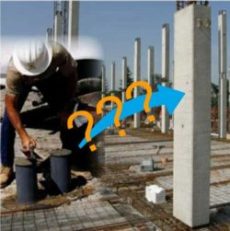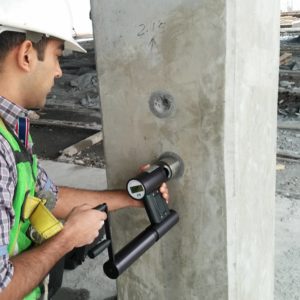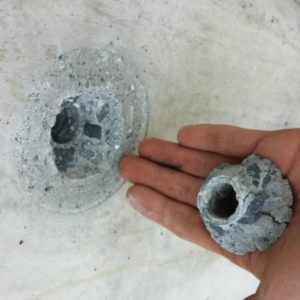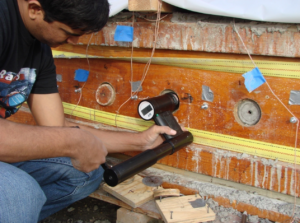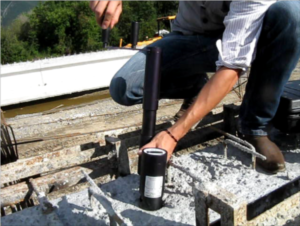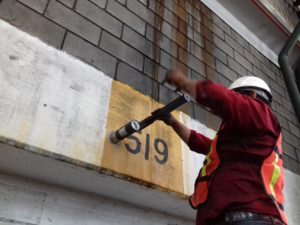IN-PLACE COMPRESSIVE STRENGTH ASSESSMENT
Why evaluate In-Place Compressive Strength?
In most countries the quality of concrete in a structure is indirectly determined by testing cylinders made with the “same” concrete delivered on site. Such Quality Control method should be complemented with in-place testing due to the fact that the concrete in the structure is subject to different conditions than the perfectly treated cylinders.
Concrete in the Structure vs Concrete in Casted Cylinders
The compaction, curing, water content, etc of the concrete in the structures formwork can be very different from the cylinder perfectly casted under certified processes. In fact, the concrete casted in the structure can be very different from the concrete in cylinders. Fortunately, all this differences can be eliminated by measuring the properties of the concrete directly in the structure at early ages.
Engineers need to have information specifically from the structure in order to remove the formwork safe and rapidly or for the application of steel tension in prestressed-precast concrete elements.
PULL-OUT: Compressive In-Place Strength
The Semi-destructive test “Pull-Out” has a close-fitting correlation with the concrete’s compressive strength regardless if the water/cementitious ratio, aggregate type, condition surface and the structures age. Since it is a semi-destructive method, the Pull-Out test can be used in New Structures as a Quality Control/ Quality Assurance method for the concrete casted in the structure; or in Old Structures to accurately determine the Compressive Strength without damaging the structures integrity. Neodex uses the most prestigious technologies in the market to provide the most accurate results.
a) Evaluation of Structures under construction (New Concrete)
– Monitoring the increase in the concrete’s Compressive strength before removing formwork
– Determine the Concrete Compressive Strength at early or advanced ages.
– Evaluate the executed curing method
– Evaluate the casting processes
– Man-hours savings on Strength determination projects
– Minimum invasión on structural elements such as columns, beams, nodes, slabs, etc
– Rebar is not affected
– Less Concrete Coring

